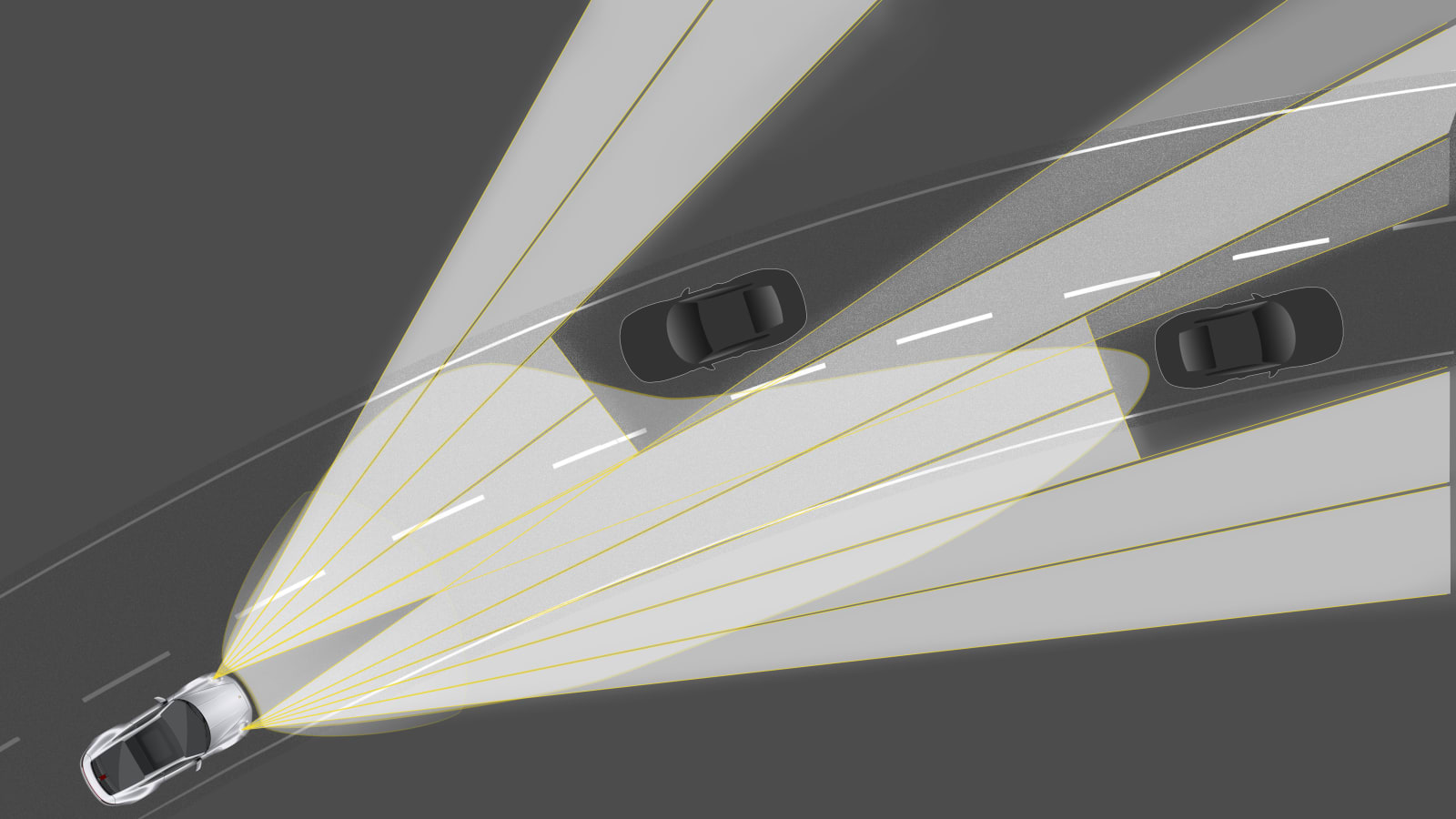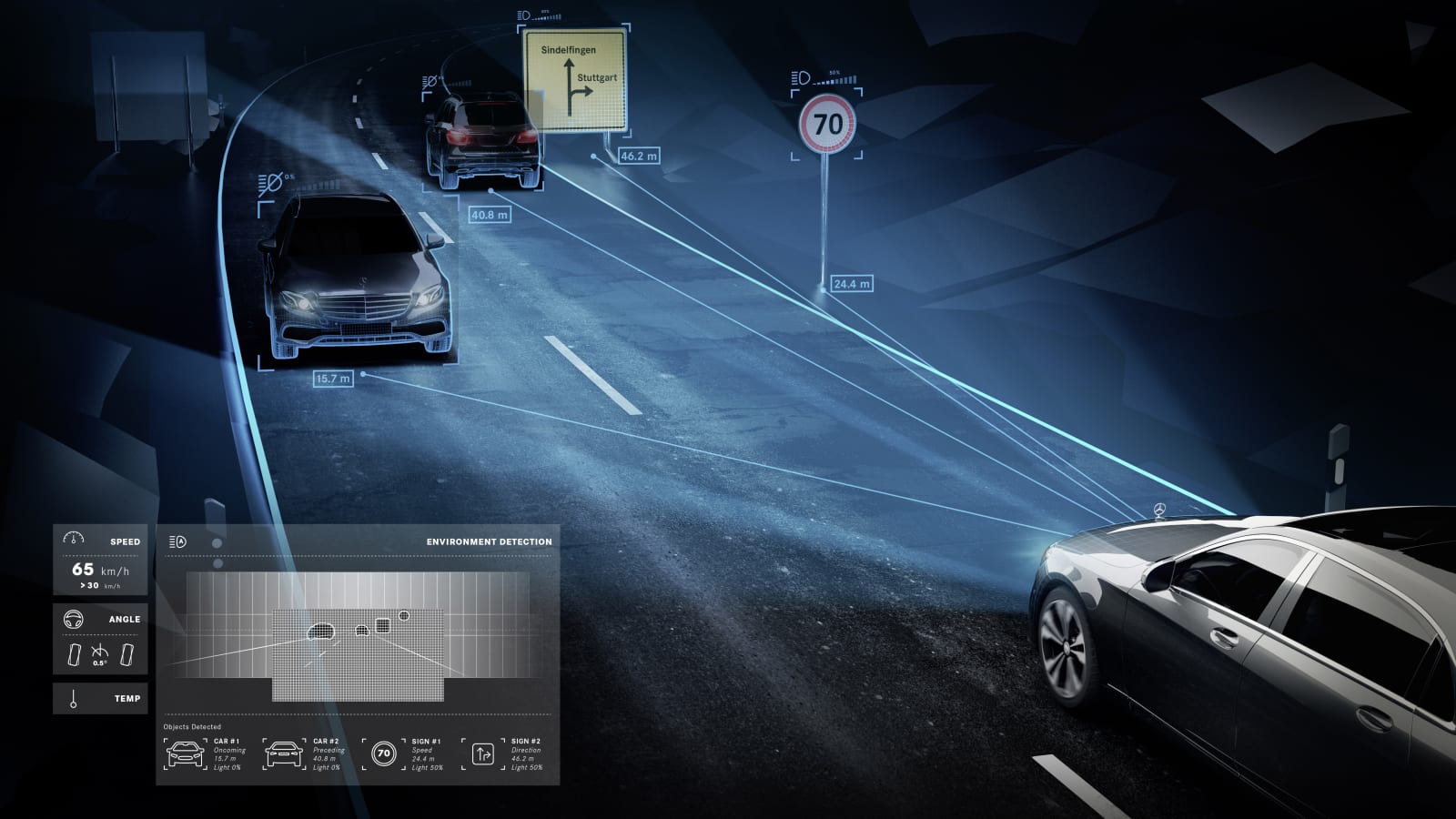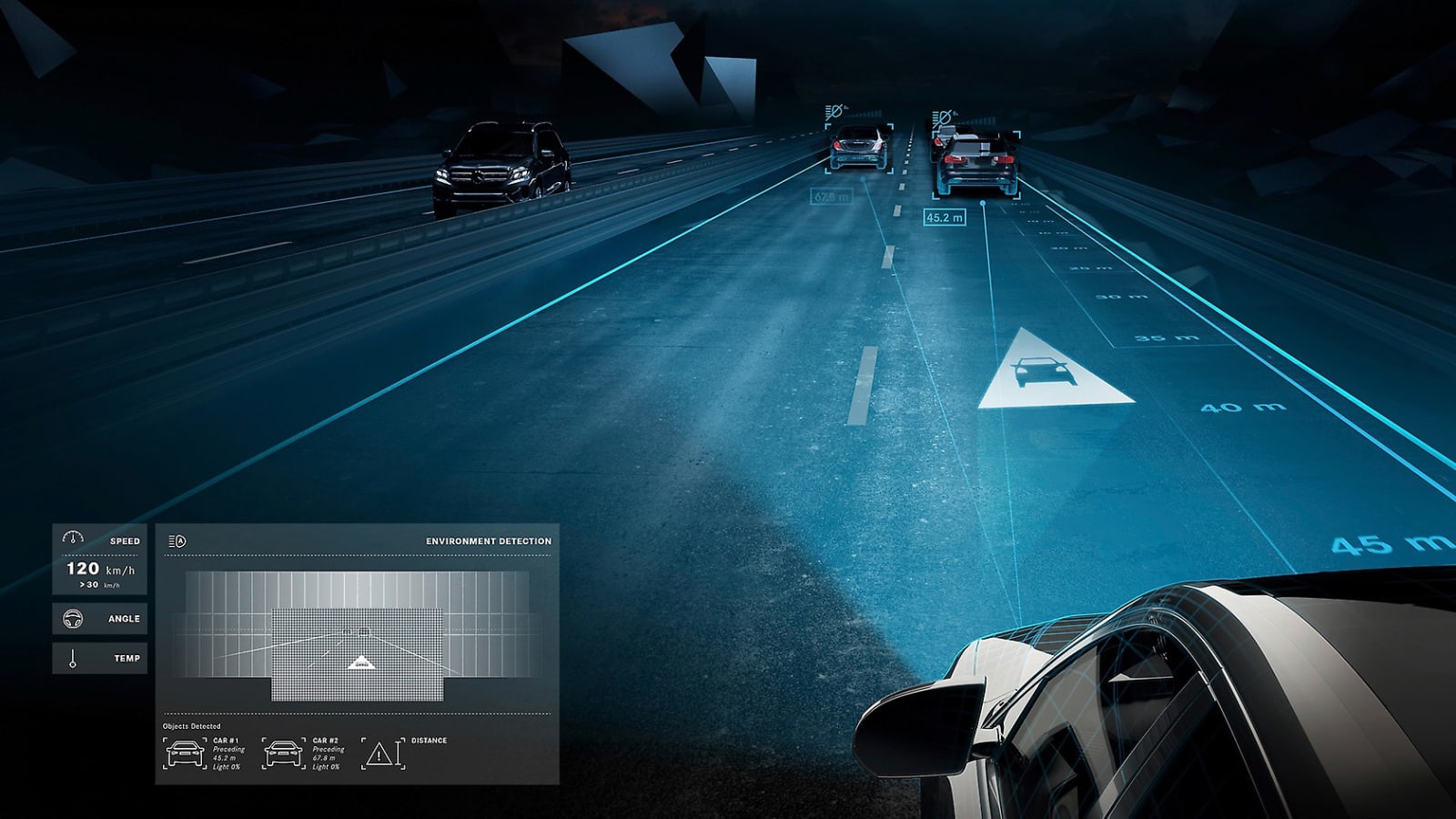Today’s headlight technology is astoundingly good. However, I didn’t know just how good it could be until I drove a 2021 Porsche 911 Turbo. I know, that’s a weird major takeaway from a car that goes 0-60 mph in just 2.7 seconds, but this wasn’t just any 911 Turbo. Porsche let me spend a week in a European-spec 911 Turbo — it had Deutschland plates on it and everything.
There are typically a number of differences between European- and U.S.-spec cars, but the big one I’ll be drilling down on is headlight technology. Many of us may not realize it, but we’re missing out big time in the U.S. when it comes to advanced headlight safety features. The problem can be remedied, but our federal regulatory bodies need to act. My week in this extra German Porsche has me convinced that we need those regulators to hop to it.
This 911 Turbo was equipped with Porsche’s top-tier PDLS Plus Matrix Design headlight option. It uses 84 individually-controllable LEDs in a three-row matrix module. This hardware allows for extremely accurate light distribution, letting Porsche include features like the “masked high beam” and “adaptive sign glare control” that are not legal in the U.S. due to our headlight rules. Other manufacturers such as Audi, Mercedes-Benz and more offer similar headlights outside the U.S.
So, what makes them that much better than our current headlights? The graphic below illustrates “masked high beam” best.
Essentially, the high beams never fully turn off at night when you’re driving along a dark road. Instead of operating like an on/off light switch as all current U.S. high beams do, Porsche simply darkens the LEDs (a fraction of the 84 available) that would otherwise be shining in the eyes of oncoming drivers. The system uses cameras and sensors to pick out other cars on the road, and is able to trace a perfect darkened opening for the other cars, while still throwing out high beam-like light everywhere else. Seeing it in action for the first time feels like magic. The lights animatedly dip on the left as a car approaches, but remain up and bright on the right, illuminating far down the road and to the sides as though the brights were still on. As soon as the oncoming car passes, the lights on the left flick back up to their fully illuminated settings.
Following other cars is made safer, too. The high beams cut a perfect rectangle of shade out of the cars I follow, but stay up on both sides, allowing me to see forward and around the car directly in front of me. The extra light thrown could easily help me pick out a deer or other animal that would be hiding in shadow on the side of the road. It’s especially powerful on curves, as the light follows the car in front of you around the bend, staying just a beat behind it to keep from blinding the driver.
No matter the situation, these lights are illuminating more of the road with significantly improved effectiveness than any U.S. car’s lights. It made nighttime driving less stressful and undoubtedly safer for both myself and other drivers.
This 911 Turbo I’m driving is a German spec car, and it’s the first time I’m experiencing the active LED matrix beam lighting (PDLS Plus) you can’t get here. I’m floored. This tech is AMAZING. It’s a crime that we can’t have these headlights here yet. pic.twitter.com/2cXwVE00i3
— Zac Palmer (@zacpalmerr) April 16, 2021
And then there’s the “adaptive sign glare control.” You know how high beams will often reflect off road signs, momentarily dazzling you? That doesn’t happen with these lights. The same cameras and sensors are able to detect road signs, then dim the LEDs directed at them to an acceptable brightness as you approach them. Just like that, you can drive past signs with the brights on and not be temporarily blinded by intense light. Mega cool!
To put it lightly, it feels like a crime that our current regulations do not allow manufacturers to run these kinds of lights in the U.S. “These kinds of lights” are referred to as adaptive driving beams by most, and to this point, they’ve been stymied by Federal Motor Vehicle Safety Standard (FMVSS) No. 108. The exact language that holds manufacturers back within this novel of rules specifically states that headlights must have a dedicated low beam and dedicated high beam to be compliant and road legal. That being the case, these adaptive beams are not allowed to perform to their full potential. Porsche and others can install the hardware to its vehicles sold here, but they must operate as two passive settings — low beam and high beam with nothing in between. So yes, the technology on some select U.S.-spec cars is there; it’s just software-limited to perform like a traditional headlight until the regulations are changed.
Sadly, this archaic regulatory language (crafted back in the 1960s) is making cars in the U.S. less safe to drive at night today. That’s why NHTSA needs to get in gear and make adaptive driving beams legal. Toyota originally petitioned NHTSA for a change in regulations to allow adaptive driving beams back in 2013. Some positive news came out of NHTSA in 2018, as the agency said it was moving to amend the regulations to allow these lights. However, to this day, there is still no final ruling, and adaptive driving beams are still not allowed.
I asked NHTSA for the latest news on where it stands with this issue and received this in response from a NHTSA spokesperson.
“NHTSA’s first priority is safety and we are committed to reducing the number of injuries and deaths on our roadways. NHTSA regulates lamps, reflective devices, and associated equipment through Federal Motor Vehicle Safety Standard (FMVSS) No. 108. The purpose of this standard is to reduce the number of crashes and injuries resulting from traffic incidents by providing adequate illumination of the roadway and by enhancing the conspicuity of motor vehicles on public roads.
“NHTSA is working to finalize a rulemaking to enable the adoption of ADB [adaptive driving beams] in the United States. As a data-driven, science-based agency, NHTSA must first collect data and conduct research to measure the scope of any safety issue and to determine where the best safety benefits lies — especially when considering regulatory action to amend or issue Federal Motor Vehicle Safety Standards (FMVSS). NHTSA focuses on improving safety through FMVSS while mitigating the risk of unintended consequences that could introduce safety risks or cause harm; data and sound science are essential to that goal.”
On the face of it, this looks like there could be some movement in the near future. However, it’s difficult to have much optimism when manufacturers have been asking for the same thing for eight years and still don’t have approval. I asked Toyota if it had any insight on the latest it heard from NHTSA. A Toyota spokesperson sent us the following.
“We had heard the rules were going to be issued by NHTSA under the previous administration but weren’t. Our understanding is the rule is under review by the new administration.”
Basically, the wait is on for President Biden’s NHTSA to make a ruling. When that will occur is still undefined, as NHTSA did not commit to any timeline.
It’s impossible to overstate just how much better these lights made driving at night. Another recent night drive in a European-spec 2022 Volkswagen Golf R with similar headlight tech only cemented it for me. Headlights are a vital safety device — the IIHS even upped its emphasis on headlight performance recently — and night driving could quickly become safer if the government acted. Plus, there are huge potentials beyond just the adaptive high beams and road sign dimming. More complex digital lights could swivel up to highlight pedestrians on the side of the road or in a crosswalk. They could blink in warning to keep people from dashing into the street or display various caution symbols on the ground for upcoming construction zones and inclement weather. There are all sorts of innovative ways that we can play around with light and ultimately make the roads a safer place because of it — manufacturers have shown us the concepts. We just need to make it possible now.
Europe’s been enjoying the added safety that these adaptive lights can provide for years now. I’ve seen what they can do, and am convinced that they’re a safety and anxiety-relieving game changer. Let’s make it happen.
Related video:



